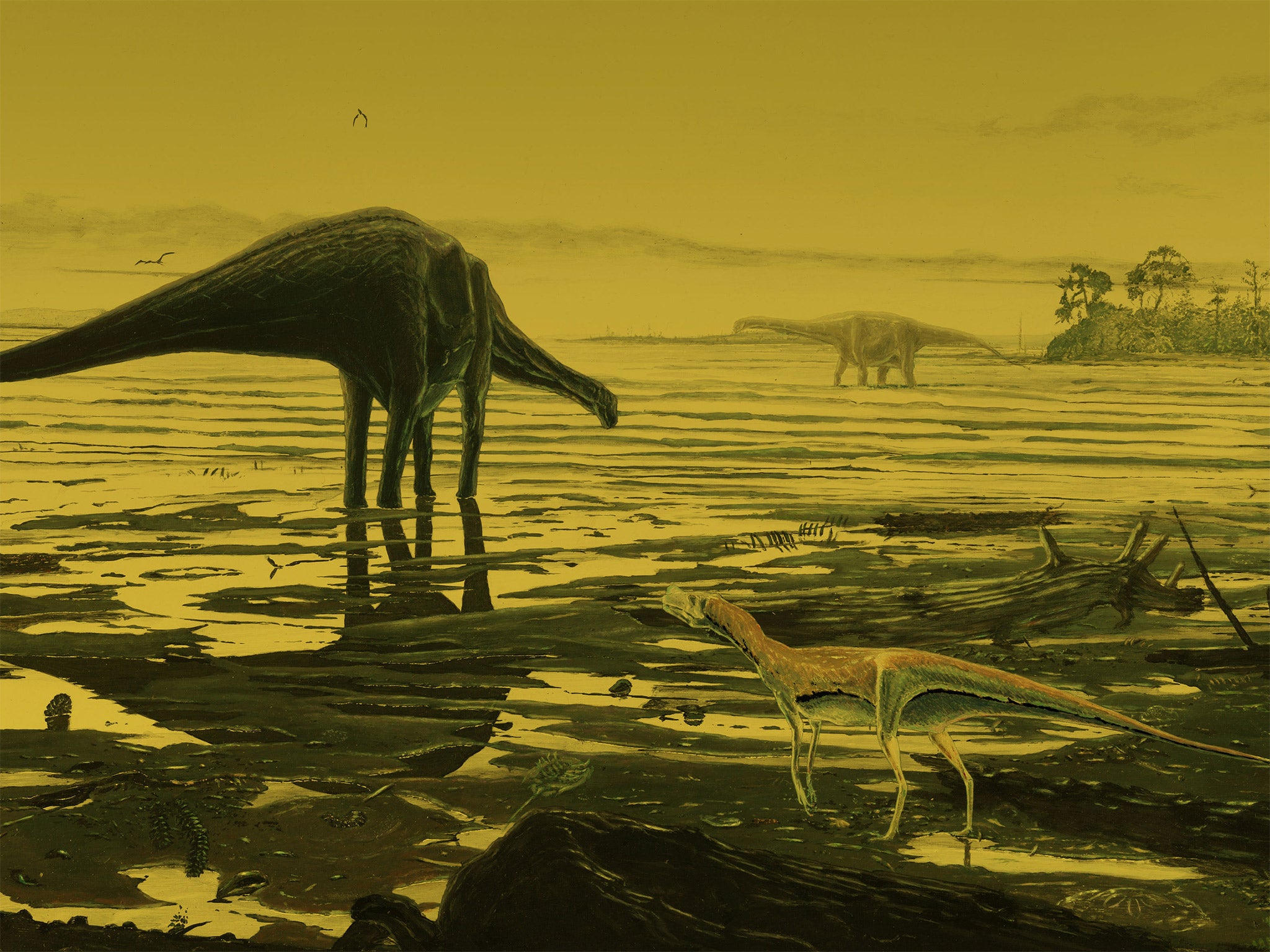Scotland's largest dinosaur site discovered on Isle of Skye after giant footprints are spotted by scientists
The discovery helps fill an important gap in human knowledge about plant-eating sauropods that lived around 170 million years ago

The biggest dinosaur site ever found in Scotland has been uncovered by scientists working on the Isle of Skye, who told how they stumbled across a series of giant footprints left by plant-eating sauropods around 170 million years ago.
The discovery of the 70cm wide footprints helps fill an important gap in human knowledge about sauropods, long-necked animals which were the biggest of the dinosaurs. Scientists believe that they grew to at least 15 metres in length and weighed more than 10 tonnes.
Dr Steve Brusatte of the University of Edinburgh’s School of GeoSciences, who led the team which made the discovery, told The Independent that he and a colleague had found the fossilised footprints almost by chance as they were packing up after a day of fieldwork in April. As they walked back to their cars, they spotted a previously unseen stretch of rock had been uncovered by the sea.
“We noticed this depression in the rock that kind of looked like a pothole, and then we noticed another one and another one. They started to form this zig-zag pattern, and it dawned on us pretty quickly that these were the footprints – and the handprints – of these huge, long-necked sauropod dinosaurs,” he said. “It was a chance discovery, we were more lucky than talented.”
When the tracks were made, they would have been at the bottom of a shallow, salt water lagoon. By analysing the structure of the footprints, the team found that the dinosaurs were early, distant relatives of more well-known species, such as Brontosaurus and Diplodocus. Their findings are published in the Scottish Journal of Geology.
Co-author Dr Tom Challands, also from the University of Edinburgh, said: “It is exhilarating to make such a discovery and being able to study it in detail, but the best thing is this is only the tip of the iceberg. I’m certain Skye will keep yielding great sites and specimens for years to come.”
Subscribe to Independent Premium to bookmark this article
Want to bookmark your favourite articles and stories to read or reference later? Start your Independent Premium subscription today.

Join our commenting forum
Join thought-provoking conversations, follow other Independent readers and see their replies